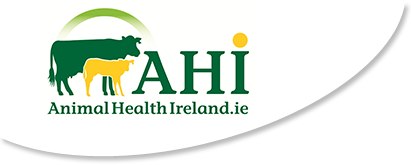Considering once-a-day milking towards end of lactation?
Some farmers opt to go once-a-day milking later in the herds' lactation to take the pressure off labour and help build condition and health for the cows.
Once-a-day milking (OAD) can be used long-term as the overall farming system, or it can be used tactically as a short-term response to adverse conditions.
OAD has grown in popularity in the last number of years in Ireland, especially in the shoulders of the year as it reduces the labour requirements for farmers, which in turn, reduces pressure on staff.
It is regularly used before drying-off cows, as milking the cows just OAD can help them to build up a bit of condition before drying off.
At the start of the calving season, when there are only a small number of cows calved and cows are not producing to a high extent, farmers quite often milk the cows once during the day, just to relieve them of their colostrum and to feed calves.
Cows are still milking reasonably well at the moment as conditions have remained decent, but soil moisture deficits have slowed down growth and milk output will gradually drop as we get into the autumn, and OAD milking might then become an option.
Once-a-day milking
If farmers are struggling to build covers late in the autumn - which may be a reality without slow growth at the minute - milking OAD will reduce the cows' intake, which will slow down the rotation while also reducing the amount of supplementary feed in the diet.
The advantages of OAD milking, though it will depend on your farm system or layout, are generally perceived as follows:
- Less time spent milking cows;
- Reducing staff pressure;
- Improving stock health (lame cows, poor condition cows, heifers, milk-fever prone cows);
- Improving reproduction (non-cyclers, heifers).
In the scenario where you have a small parlour for your herd size and spend hours milking, OAD might be an option to save time and labour.
Furthermore, if your farm layout is not ideal for milking cows and requires them walking long distances to the shed, OAD might be more beneficial for the cows' health and production.
There are a range of options possible, allowing you to choose milking times that best suit your team.
If you are in the process of deciding whether to go OAD milking for the long-run on your farm, just bear in mind that it requires a lot of planning as it involves a change to the whole farm system.
It is going to be a massive change in routine for the cows and will take them a great deal of time to get used to the milking intervals, which may see a drop in performance initially.
Considerations
OAD milking has shown to result in a drop in milk production and may increase your herd's somatic cell count (SCC), while it has no effect on your herd's fertility after the first year.
In general, the health and reproductive performance of your cows slightly improves, as they are not under as much pressure and can hold their condition a lot easier.
OAD milking should be considered for some farm systems.
Before you think any further into it, the questions you should ask yourself are as follows:
- Are you looking for a better work/life balance or find milking physically challenging?
- Do you find it difficult to attract/retain suitable staff?
- Are you meeting industry targets for reproductive performance?
- How would you use the time you save by OAD milking?
- Would OAD milking avoid capital expenditure to expand the dairy infrastructure?
- Can you afford for your bulk milk SCC to increase by 20,000-40,000celss/ml?
- Can your business sustain at least one season of reduced milk solids/cow?
The genetic make-up of your herd will have to be considered, as a high-producing Holstein Friesian cow would probably not suit OAD milking.
Ideally, you would want to be selecting bulls with the highest yield of solids while producing the minimum volume of milk, and avoid bulls most prone to high SCC. A low yielding, high solids Jersey-cross herd may be well suited for OAD milking.
Going OAD for the last month to six weeks of the lactation may reduce your kg of milk per cow and should be considered for the Nitrates Banding as if you are in Band two and on the brink of Band three.
In this scenario, reducing milk output/cow while building condition and health of your herd might be a decent option. Discuss this matter with your dairy advisor.





